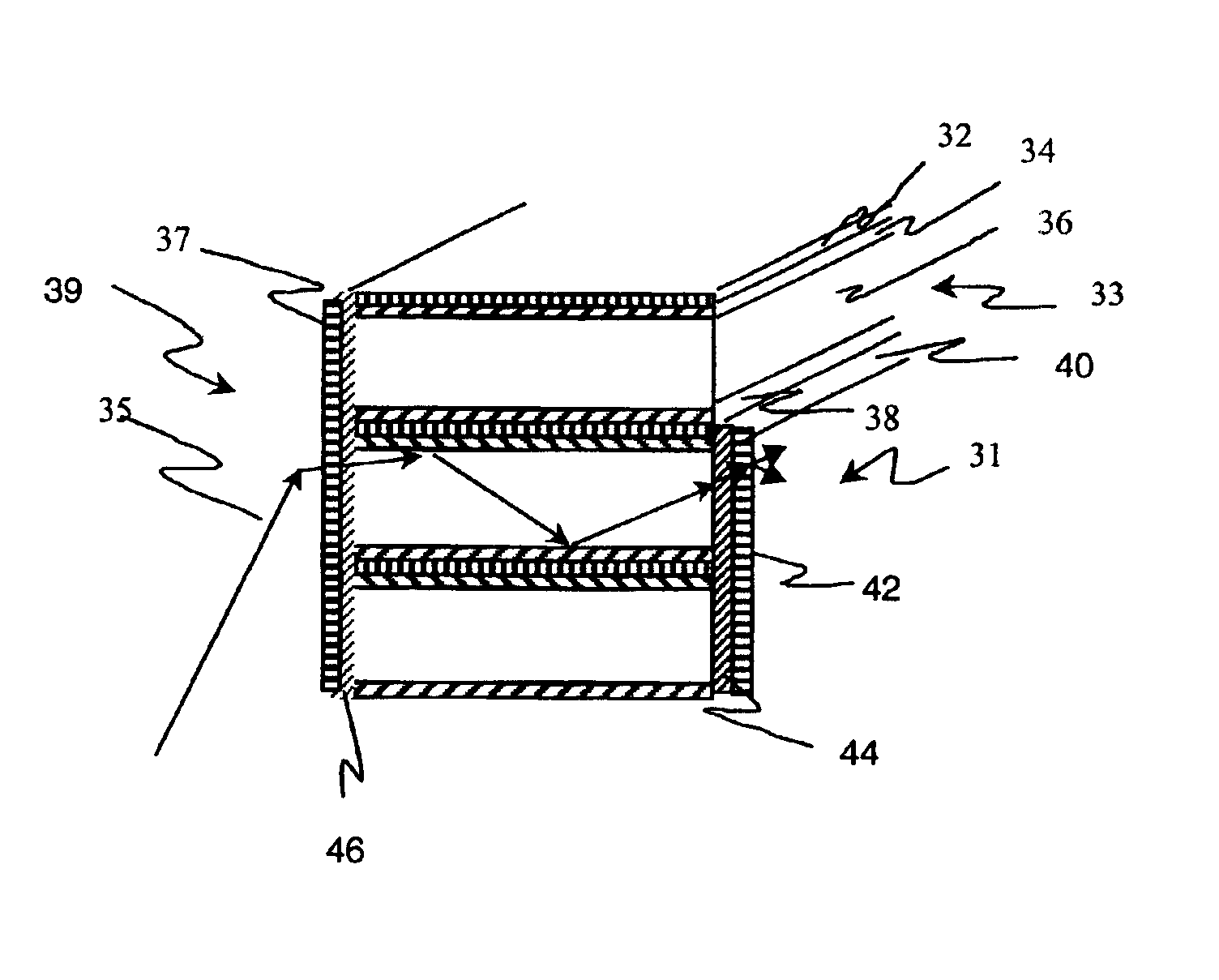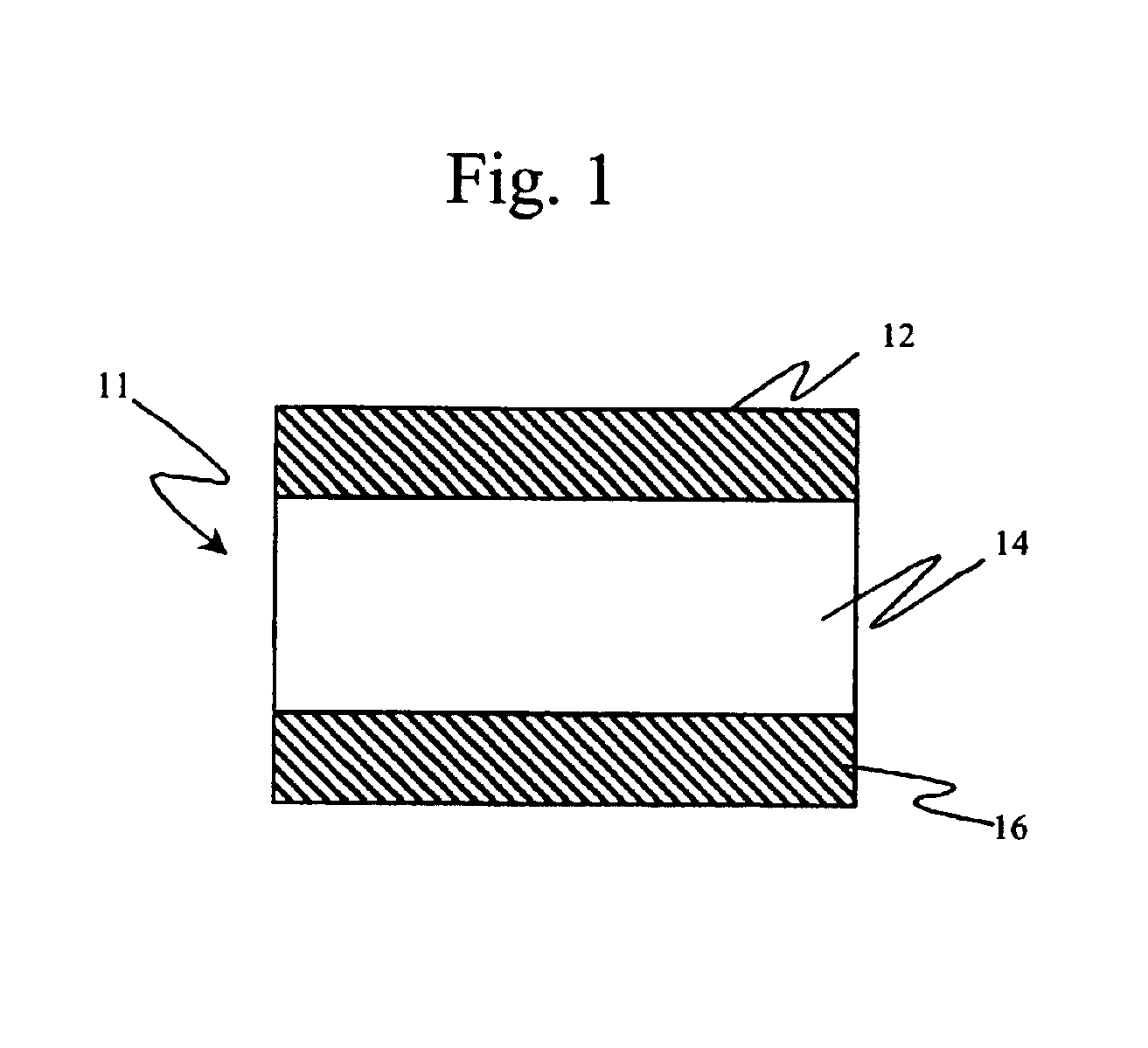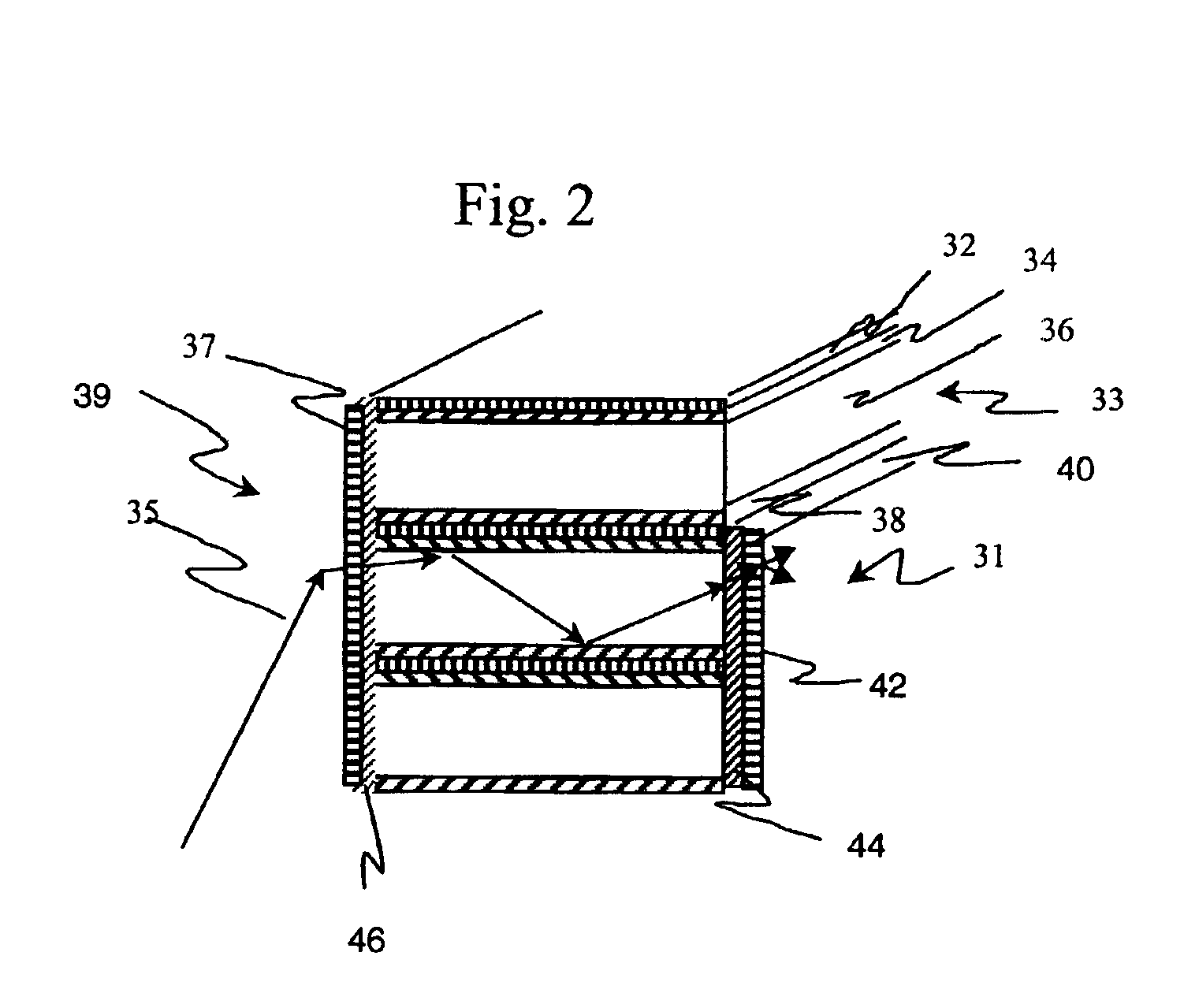Waveguide and method of smoothing optical surfaces
a waveguide and optical surface technology, applied in waveguides, bundled fibre light guides, instruments, etc., can solve the problems of inability to actually blacken direct view images, cumbersome screens, and a practical limit for cathode ray tubes, and achieve excellent viewability without excessive grinding and polishing of surfaces
- Summary
- Abstract
- Description
- Claims
- Application Information
AI Technical Summary
Benefits of technology
Problems solved by technology
Method used
Image
Examples
examples
[0083]The materials used in the examples and comparative samples of the invention include the following.
Example of Waveguide Component
[0084]A waveguide component as per the present invention is constructed as follows.
[0085]The core of the waveguide component comprises a ˜254 μM thick polycarbonate clear base. On each side of the polycarbonate base is coated a ˜3 μm thick (dry) clad layer comprising an epoxy resin (EPON 1009F) manufactured by Shell. The coating is made from a solution in 2-butanone, using a fixed-slot extrusion hopper, and thoroughly dried. A second coating layer was applied on top of each side the EPON clad which serves as an adhesive layer. This layer is approximately 4.5 μm thick. The layer consists of VITEL 2700 polyester (supplied by Bostik) with a black dye (Solvent Black 27) mixed in at approximately 12.5% of the solids. The optical density of the layer is approximately 0.8 as measured by X-rite densitometer. The coating is made from a solution in 2-butanone, ...
PUM
 Login to View More
Login to View More Abstract
Description
Claims
Application Information
 Login to View More
Login to View More - R&D
- Intellectual Property
- Life Sciences
- Materials
- Tech Scout
- Unparalleled Data Quality
- Higher Quality Content
- 60% Fewer Hallucinations
Browse by: Latest US Patents, China's latest patents, Technical Efficacy Thesaurus, Application Domain, Technology Topic, Popular Technical Reports.
© 2025 PatSnap. All rights reserved.Legal|Privacy policy|Modern Slavery Act Transparency Statement|Sitemap|About US| Contact US: help@patsnap.com



